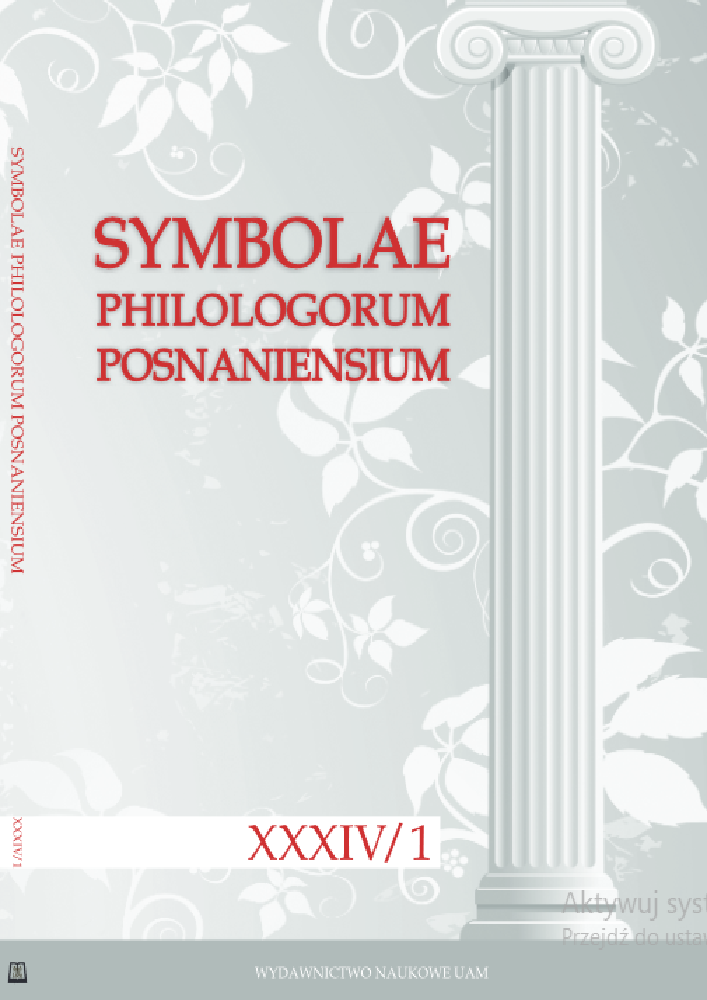Abstrakt
Legislation was a component that characterized the link between civic and religious authority throughout the Archaic period to the early Roman Empire. Legislation is much celebrated in the respective philosophical cultures of Plutarch and Porphyry: in the former, the image of the ideal ruler reflects the notion of a philosopherking, while in the latter, it was attached with significance to life lived under the divine law of the Intellect of Kronos. This article will demonstrate how Plutarch and Porphyry jointly acknowledge the legislator’s legendary image as more than mediating between hostile factions of the citizen body and regulating divine worship and ritual praxis, often on the basis of his political expertise and divine ancestry by casting it in a fresh mold. In doing so, Plutarch and Porphyry together claim that the legislator’s legendary image plays a decisivly corrective role in ancient society by way of introducing the non-violation of animal life for food and sacrifice. This corrective role will be discussed as being pivotal for the intellectual pursuit of the priestly community and philosophers in selected dialogues in Plutarch’s Moralia and Porphyry’s De Abstinentia.
Bibliografia
Cherniss and Helmbold 1957: Cherniss Harold and Helmbold William C. Plutarch’s Moralia, Loeb Classical Library, London. William Heinemann, 1957.
Chernise 1976: Chernise, Harold. Plutarch On the Self-Contradictions of the Stoics, Moralia, Volume XIII: Part 2, Loeb Classical Library, Cambridge, MA: Harvard University Press, 1976.
Clark 2014: Clark, Gillian, Porphyry, De Abstinentia, London: Bloomsbury, 2014.
De Lacy and Einarson 1978: De Lacy, Phillip H. and Einarson, Benedict. Plutarch, De Fato, Cambridge, Massachusetts, 1978.
Gulick 1927: Gulick, Charles Burton. Athenaeus, Deipnosophistes, Harvard University Press, 1927.
Jowett 2001: Jowett, Benjamin. Selected Dialogues of Plato, Modern Library, 2001.
Perrin 1923: Perrin, Bernadotte. Plutarch’s Lives, Loeb Classical Library, Cambridge, MA and London, 1923.
Bonnechere 2013: Bonnechere, Pierre. “The Religious Management of the Polis: Oracles and Political Decision-Making,” In: A Companion to Greek Government, edited by Hans Beck, Malden- Blackwell, 366–38. DOI: https://doi.org/10.1002/9781118303214.ch24
Digeser 2006: Elizabeth DePalma Digeser, “Religion and law and the Roman polity: The era of the Great Persecution in Religion and Law” In: Classical and Christian Rome, edited by Clifford Ando and Jorg Rupke, Franz Steiner Verlag, 68–84.
Dillon 1996: Dillon, John. Middle Platonists: 80 BC to A.D. 220, Cornell University Press, 1996.
Gagarin 1986: Gagarin, Michael. Early Greek Law, University of California Press, 1986.
Gruen 1990: Gruen, Erich. Studies in Greek Culture and Roman Policy, Leiden,1990. DOI: https://doi.org/10.1163/9789004674905
Hagedorn 2017: Hagderon Anselm, “Sacred Law, Lawgivers and Codification: Perspectives from the Hebrew Bible, Gortyn and Selinus,” In: Writing Laws in Antiquity L’écriture du droit dans l’Antiquité, edited by Dominique Jaillard et Christophe Nihan, Harrassowitz Verlag. Wiesbaden, 117–140. DOI: https://doi.org/10.2307/j.ctvckq4q3.9
Harris 2015: Harris, Edward. “Toward a Typology of Greek Regulations about Religious Matters: A Legal Approach,” Kernos, 28 (2015): 53–83. DOI: https://doi.org/10.4000/kernos.2328
Holkeskamp 1992: Holkeskamp Karl. “Written law in Archaic Greece,” Proceedings of the Cambridge Philological Society, no. 38 (1992): 87–117. DOI: https://doi.org/10.1017/S0068673500001632
Hyde 1917: Hyde, W.W. “The Prosecution of Lifeless Things and Animals in Greek Law: Part I,” The American Journal of Philology, vol. 38, no. 2 (1917): 152–175. DOI: https://doi.org/10.2307/289180
Hyde 1917: Hyde, W.W. “The Prosecution of Lifeless Things and Animals in Greek Law: Part 11,” The American Journal of Philology, vol. 38, no. 3 (1917): 285–303. DOI: https://doi.org/10.2307/289426
Koulakiotis 2008: Koulakiotis Elias. “Greek Lawgivers in Plutarch: A Comparison Between the Biographical Lycurgus and the Rhetorical Alexander,” In: The Unity of Plutarch’s Work, edited by Anastasios G. Nikolaidis, Berlin, New York: De Gruyter, 403–424. DOI: https://doi.org/10.1515/9783110211665.6.403
Swain 1989; Swain, Simon. “Plutarch: Chance, Providence, and History,” The American Journal of Philology, vol. 110, no. 2 (1989): 272–302. DOI: https://doi.org/10.2307/295178
Szegedy-Maszak 1978: Szegedy-Maszak, Andrew. “Legends of the Greek Lawgivers,” Greek, Roman, and Byzantine Studies, 19 (1978): 199–209.
Thür 2014: Thür, Gerhard. “Rationality and irrationality in the ancient Greek law or procedure,” Fundamina 20 (2), (2014): 916–924.

